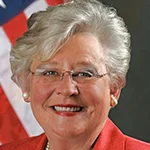 |
| Kathy Bloomgarden |
While the one-year anniversary of the COVID-19 pandemic has come and gone, the ways in which it has impacted society remain steadfast. Over the past twelve months, our world has become more digitally-dependent than ever, influencing and informing everything we do, from the way we think to how we behave. As the pandemic accelerated our world into a remote state of living seemingly overnight, digital became both the backbone and blueprint for our new society. From how patients schedule and carry out doctor’s visits, to how students learn, to how consumers shop, and how singles date—our behaviors have become enmeshed in a new digital matrix, one that will remain intact long after the pandemic leaves our shores.
In order to operate in this new society, communication has and will continue to be critical to ensure challenges are circumvented and opportunities are seized. In a world of constant screen time—where the average attention span has now fallen to 12 seconds for Millennials and a mere eight seconds for Gen Z—it’s paramount that effective communication be clear, transparent, authoritative and easily digestible because consumers are looking for fast answers. (There is, after all, a reason TikTok rose to become 2020’s most popular app.)
As behaviors evolve amid this new digital milieu, so too must communication. Here are three ways to effectively communicate in the post-pandemic digital era:
Don’t just tell—story tell
In today’s digital era, it has become harder than ever to capture consumers’ attention. So how, then, do brands build an authentic bond with their intended audience? The key lies in developing an emotional connection, rendered through compelling and heartfelt stories around the brand’s ethos. In fact, research has found that 92 percent of consumers want advertising and content that feel like stories; stories are 22 times more memorable than facts and figures alone.
| This article is featured in O'Dwyer's May '21 PR Firm Rankings Magazine (view PDF version) |
At Ruder Finn, we’re driving this type of storytelling through a new, analytics-driven content marketing offering dedicated to strengthening our clients’ storytelling capabilities in a multi-platform approach. The new specialty uses story-mining tools and leading technologies to help build deep relationships by developing branded content that entertains, educates and engages consumers in a real, relevant and repeatable way.
Embrace new ways of connecting
While there’s no real replacement for human interaction, many new and emerging technologies are offering an alluring respite from the social isolation of the pandemic “normal,” particularly as consumer concerns over the coronavirus linger. Just consider a new EY study, which found that despite the recent stabilization brought on by mass COVID-19 vaccination administration, people are more worried than ever. Indeed, the percentage of people who think they will live in fear of COVID-19 for at least another year has risen from 37 to 40 percent in the past four months. So, it’s really no surprise that 77 percent of consumers have changed the way they shop.
With this change in consumer behavior, and as consumers continue to prioritize their health and safety over all else—continuing to leverage virtual experiences over in-person ones—meeting consumers where they are and bringing in-store experiences into consumers’ homes will become ever-important. To do this, brands are increasingly using new and emerging platforms—from TikTok to Clubhouse—to retain earnest connections with consumers—and in some cases even crowdsource revolutionary new products.
Acknowledge the wellness economy
Between lockdowns, limited in-person social interactions and constant screen time, consumers have faced mounting health challenges over the past year. In fact, a Kaiser Family Foundation poll from July found many adults are reporting negative impacts on their mental health and well-being as a result of their pandemic stress, from difficulty sleeping (36 percent) or eating (32 percent) to worsening chronic conditions (12 percent).
But while there have certainly been several pain points, in many ways, the COVID-19 pandemic and its resultant digital culture have simultaneously allowed consumers to take charge of their well-being more decidedly than ever before. With healthcare tools at their fingertips, today’s consumers are eager to become purveyors of their own wellbeing, utilizing new platforms to communicate with physicians, leveraging apps to track health conditions and make decisions and practicing more agency in their well-being by taking virtual fitness classes. Therefore, to stay relevant and connect with consumers, brands are encouraged to map this new wellness value shift, better positioning themselves to resonate with consumers in today’s wellness economy by underscoring their purpose-driven brand story in a way that resonates with consumers’ core wellbeing values.
In the end, no matter how they go about doing so, amid today’s changing consumer behaviors, it’s imperative that brands become better listeners than they have ever been before—using new tools of discovery to connect with consumers and tell their brand story with empathy and understanding.
***
Kathy Bloomgarden is CEO of Ruder Finn, Inc.


 Southern governors claim they know what's best for their working class, and it's not pay raises... A Ukrainian human rights group played a key role in convincing House Speaker Mike Johnson to hold a vote to send arms to Ukraine, Israel and Taiwan... Trump Media & Technology Group blames short-selling and not lousy outlook for its stock slump.
Southern governors claim they know what's best for their working class, and it's not pay raises... A Ukrainian human rights group played a key role in convincing House Speaker Mike Johnson to hold a vote to send arms to Ukraine, Israel and Taiwan... Trump Media & Technology Group blames short-selling and not lousy outlook for its stock slump. The techniques deployed by OJ Simpson's defense team in the 'trial of the century' served as a harbinger for those used by Donald Trump... People worry about the politicization of medical science just as much as they fret about another pandemic, according to Edelman Trust Barometer... Book bans aren't restricted to red states as deep blue Illinois, Connecticut and Maryland challenged at least 100 titles in 2023.
The techniques deployed by OJ Simpson's defense team in the 'trial of the century' served as a harbinger for those used by Donald Trump... People worry about the politicization of medical science just as much as they fret about another pandemic, according to Edelman Trust Barometer... Book bans aren't restricted to red states as deep blue Illinois, Connecticut and Maryland challenged at least 100 titles in 2023. The NBA, which promotes legalized gambling 24/7, seems more than hypocritical for banning player for placing bets... Diocese of Brooklyn promises to issue press release the next time one of its priests is charged with sexual abuse... Truth Social aspires to be one of Donald Trump's iconic American brands, just like Trump University or Trump Steaks or Trump Ice Cubes.
The NBA, which promotes legalized gambling 24/7, seems more than hypocritical for banning player for placing bets... Diocese of Brooklyn promises to issue press release the next time one of its priests is charged with sexual abuse... Truth Social aspires to be one of Donald Trump's iconic American brands, just like Trump University or Trump Steaks or Trump Ice Cubes. Publicis Groupe CEO Arthur Sadoun puts competition on notice... Macy's throws in the towel as it appoints two directors nominated by its unwanted suitor... The Profile in Wimpery Award goes to the Ford Presidential Foundation for stiffing American hero and former Wyoming Congresswoman Liz Cheney.
Publicis Groupe CEO Arthur Sadoun puts competition on notice... Macy's throws in the towel as it appoints two directors nominated by its unwanted suitor... The Profile in Wimpery Award goes to the Ford Presidential Foundation for stiffing American hero and former Wyoming Congresswoman Liz Cheney. JPMorgan Chase chief Jamie Dimon's "letter to shareholders" is a must-read for PR people and others interested in fixing America and living up to its potential... Get ready for the PPE shortage when the next pandemic hits... Nixing Netanyahu. Gaza carnage turns US opinion against Israel's prime minister.
JPMorgan Chase chief Jamie Dimon's "letter to shareholders" is a must-read for PR people and others interested in fixing America and living up to its potential... Get ready for the PPE shortage when the next pandemic hits... Nixing Netanyahu. Gaza carnage turns US opinion against Israel's prime minister.


 Have a comment? Send it to
Have a comment? Send it to 
No comments have been submitted for this story yet.